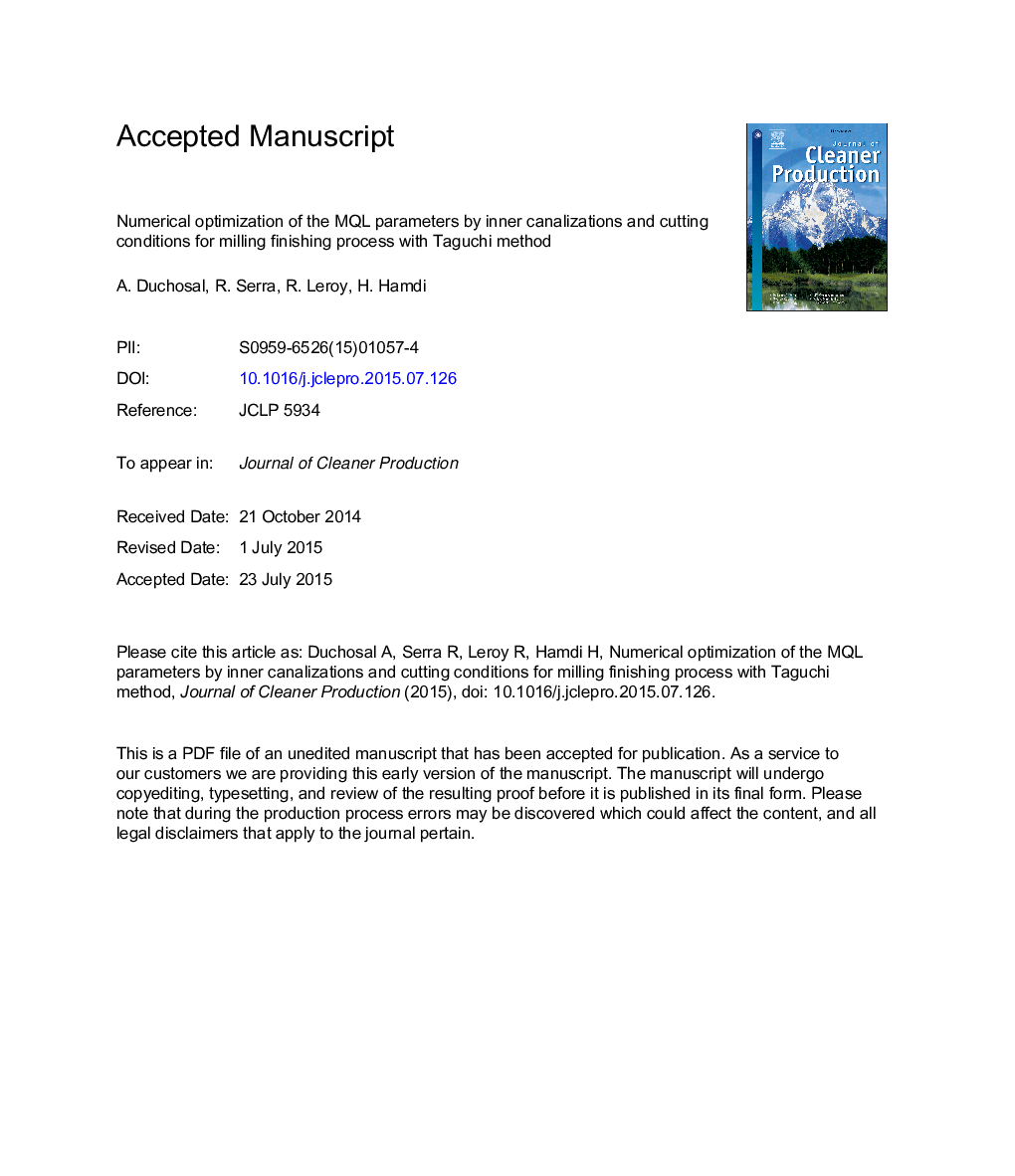| Article ID | Journal | Published Year | Pages | File Type |
|---|---|---|---|---|
| 10688143 | Journal of Cleaner Production | 2015 | 20 Pages |
Abstract
This paper focuses on a numerical optimization of the minimum quantity lubrication (MQL) design parameters outside a rotating tool with the Taguchi method under finishing conditions in order to get enough oil on the cutting edge before removing materials. This environmental-friendly technique is suitable for cleaner manufacturing for a wide context of production. Parameters as particle sizes for different oil mist input device parameters (inlet pressures) as function of different canalization geometries have been determined on a previous experimental part. The evaluated parameters are: different inlet pressures, inner oriented canalizations, cutting speeds and feed rates. The simulations highlighted the impingement of the different oil particle sizes on the tool carbide inserts as function as these different parameters. The main goal of the MQL process is to spray the cutting edge to ensure a good lubrication on the tool-chip contact area depending on the feed rate and the cutting depth. Thus, criteria such as volume per unit area (oil amount) and an average distance of the oil scatter from droplet impingements (oil impingement to the cutting edge) relative to a global virtual area from tool/chip interface are considered. The Taguchi method for the “design of experiments” (DOE) is applied in order to optimize numerical design parameters in finishing conditions as function of those criteria. The analysis shows that doe approach is suitable to solve this numerical problem. The results show that the optimal combination for a high lubrication performance at high cutting speed is based on small feed rate, with high canalization orientations and inlet pressure.
Related Topics
Physical Sciences and Engineering
Energy
Renewable Energy, Sustainability and the Environment
Authors
A. Duchosal, R. Serra, R. Leroy, H. Hamdi,
